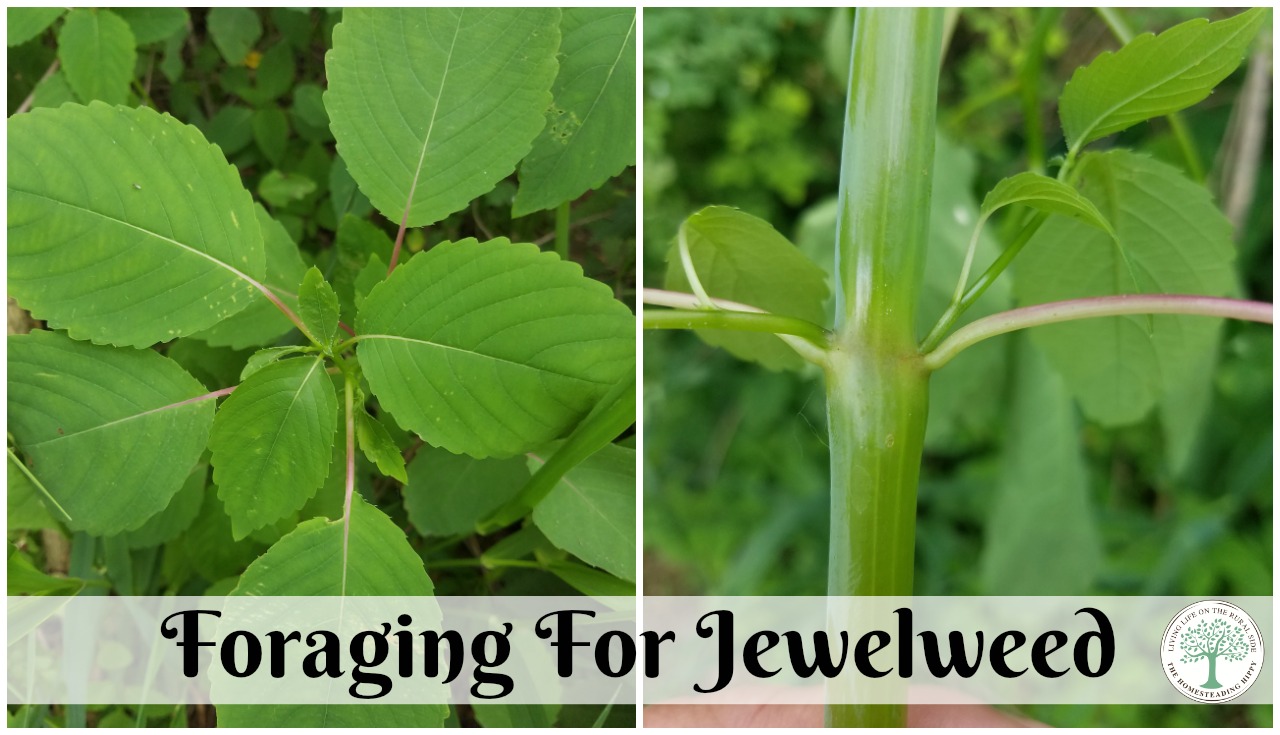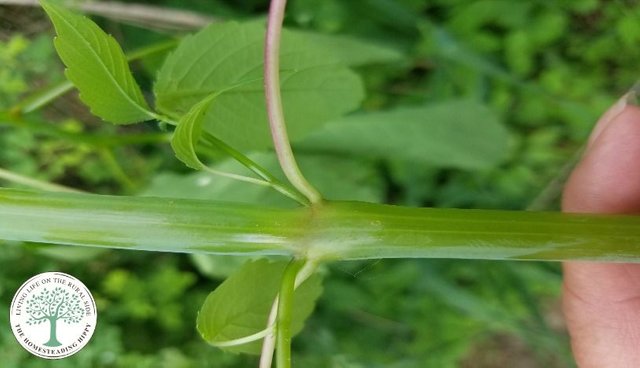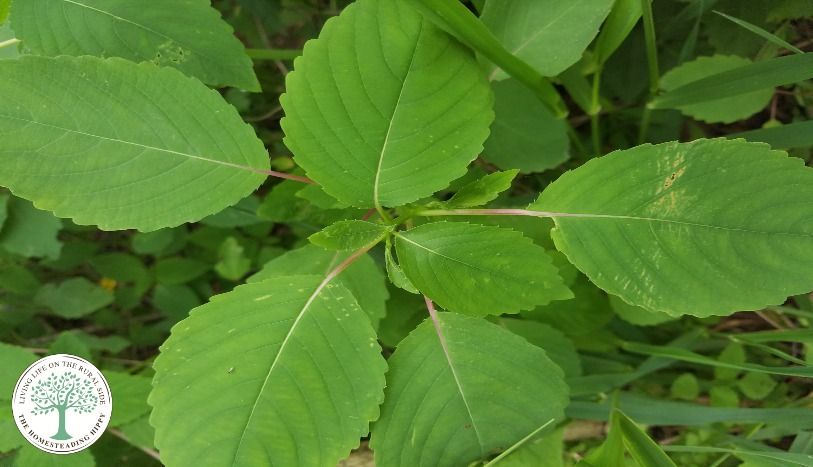Impatiens capensis, also known as Jewelweed, is a prize for foragers.
If you run into poison ivy or stinging nettle while foraging, you will want to get to know jewelweed, nature's "cure" for poison ivy rashes. The Homesteading HIppy
When you are foraging, especially in wooded areas, you are sure to come across poison ivy. Poison ivy is best identified by the "leaves of 3" in one cluster and by it's bright green to reddish green leaves. The urushiol in poison ivy can cause many to break out in blisters that itch for weeks.
Some lucky persons will not have any reaction to poison ivy. My hubby and all 3 of my kids can walk up to poison ivy, and pull it out from the ground with their bare hands. They have zero reaction. EVER. On the other hand, I have never tested whether or not I have a reaction. Getting too close to the plant on purpose seems ludicrous to me. I just let my hubby deal with the plants and let HIM go into the areas that have poison ivy to get jewelweed for me.
Jewelweed plants are often found growing near poison ivy and stinging nettle. Jewelweed uses include using plant juices to relieve itching and irritation that often comes from poison ivy, stinging nettle and insect bites.
Jewelweed identification is fairly easy. Jewelweed is a tall herb (0.5-2.5 meters high) with coarsely toothed leaves and clustered showy flowers.
The leaves are oval, coarsely-toothed, bluish-green (to 3.5" long) and are whitish on the bottom. The stem will be hollow, but have a watery coating inside. The common name comes from the forming of dew or rain in sparkling droplets on the leaves of the plant.
If you run into poison ivy or stinging nettle while foraging, you will want to get to know jewelweed, nature's "cure" for poison ivy rashes. The Homesteading HIppy
If you run into poison ivy or stinging nettle while foraging, you will want to get to know jewelweed, nature's "cure" for poison ivy rashes. The Homesteading HIppy
There two kinds of flowers that appear on jewel weed. One comes from thin, thready stems, with several petal like sepals that look like a tube with a spur at the end. Flowers will be about an inch in length and will be orange to orange-yellow with reddish brown spots on the inside of the tube. The flowers are said to resemble jewels in showy appearance.
The other flower is a tiny petalless flower that never opens, which produce most of the seeds. The seeds, which when ripe, explosively split open at a touch, dispersing the tiny seeds several feet in all directions. This has the common name of "touch-me-not".
Often blooming in June to October, jewelweed can be found all over the United States, with some exceptions occurring in Montana, Wyoming, and parts of the Southwestern US.
If you run into poison ivy or stinging nettle while foraging, you will want to get to know jewelweed, nature's "cure" for poison ivy rashes. The Homesteading HIppy
To use jewelweed, simply break a stalk, slice it open with your fingernail and spread the watery substance over the area that was exposed to poison ivy.
Other jewelweed uses include making jewelweed salve (get salve directions here), jewelweed soap (get basic soap directions here) and jewelweed ice cubes.We also make ice cubes from the plant to store in the freezer to take along on road trips or camping for quick relief.
How to make jewelweed for poison ivy ice cubes:
3 large handfuls of jewelweed stems
1 large stock pot (preferrably stainless steel)
water to cover plants
Simply remove the jewelweed leaves from the stems and break to fit the pot.
Add water to just cover the stems and simmer on low heat, with the pot covered, for 30 minutes.
Remove from the heat and allow to cool.
Remove the stems from the infused water. It may be a bit sticky and will be on the brownish side.
Pour into ice cube trays and freeze until solid.
Store in the freezer, in ziplock bags until needed.
To use, simply remove a jewelweed infused cube and rub on affected areas. For best results, apply the jewelweed as soon as you think you may have been exposed to poison ivy, or as soon as the bug bites appear. You can refreeze the leftover cube and reuse as necessary. Apply as often as needed.
To make jewelweed infused oil for soap or salve:
remove the leaves from the jewelweed stems and break to fit into a glass container
cover stems with almond, jojoba, olive, or coconut oil (see what oils to use here)
place container in a 200 oven for 2 hours
allow to cool and remove stems
continue with salve or soap recipe
Do you have issues with poison ivy rash? What have you used in the past to help it?


Yes, this is the best herbal remedy for poison ivy or oak.
Downvoting a post can decrease pending rewards and make it less visible. Common reasons:
Submit